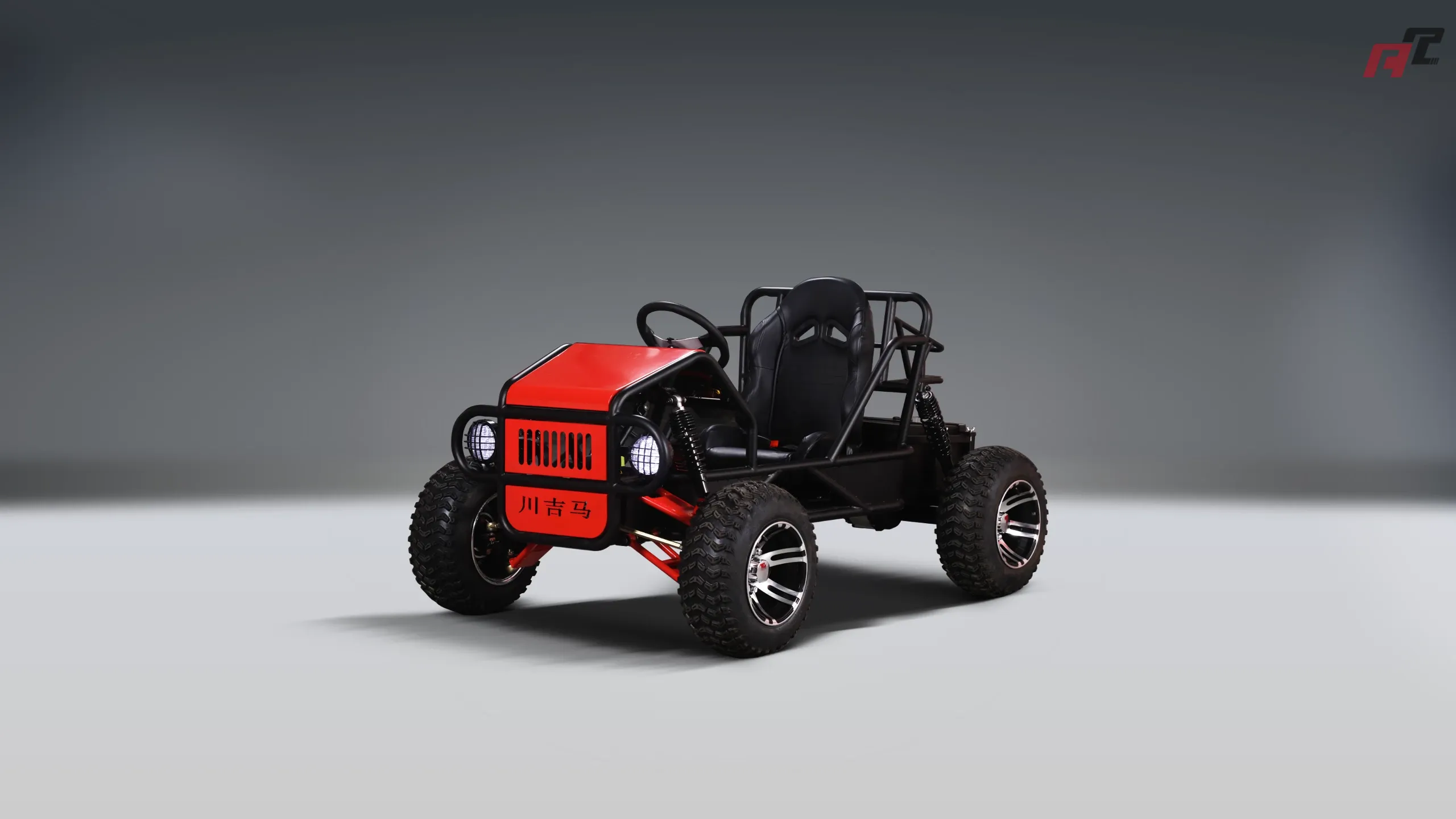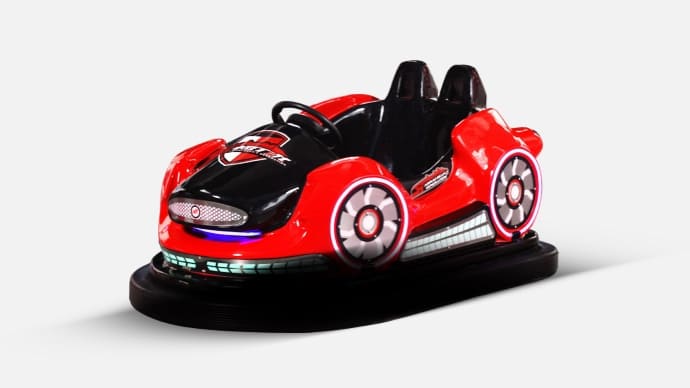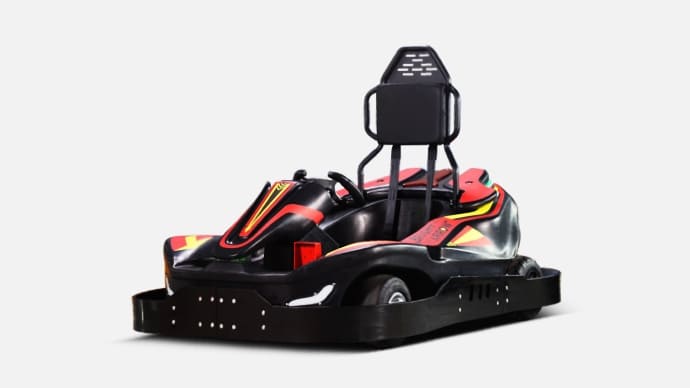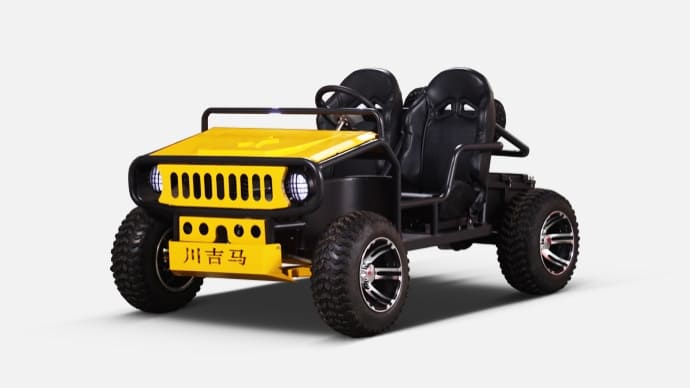Case Study: Successful Go-Kart Parks Using Battery Bumper Cars
- Case Study: Successful Go-Kart Parks Using Battery Bumper Cars
- Why battery bumper car installations complement go-kart parks
- Common objectives when adding battery bumper car attractions
- Profile: Typical go-kart park that succeeds with battery bumper cars
- How ANCHI Amusement supports go-kart parks with battery bumper car solutions
- Design and layout considerations for battery bumper car arenas
- Operational advantages of battery bumper cars
- Guest experience: why visitors love battery bumper cars
- Maintenance and safety best practices for battery bumper cars
- Energy management and charging strategies for reliable uptime
- Integration with ticketing, pricing, and upsell strategies
- Case examples: implementation approaches that deliver results
- Comparison: battery bumper car systems vs. traditional wired bumper cars
- Financial considerations and realistic ROI factors
- Vendor selection checklist for purchasing battery bumper cars
- Real-world lessons from parks that added battery bumper cars
- Future trends: battery tech and guest expectations
- Quick implementation roadmap for operators
- Frequently Asked Questions (FAQ) about battery bumper cars
- Q: What is a battery bumper car and how does it differ from traditional bumper cars?
- Q: Are battery bumper cars safe for children?
- Q: How long do the batteries last and how are they charged?
- Q: What maintenance should we expect with battery bumper cars?
- Q: Will adding a battery bumper car arena increase my park’s revenue?
- Q: How do I choose the right supplier for battery bumper cars?
- Q: Can battery bumper cars be relocated or reconfigured?
- Q: What are typical session lengths for battery bumper cars?
Case Study: Successful Go-Kart Parks Using Battery Bumper Cars
Why battery bumper car installations complement go-kart parks
Many modern family entertainment centers and go-kart parks have added battery bumper car attractions to diversify offerings and increase per-guest spend. A well-executed battery bumper car zone provides a family-friendly draw that runs alongside competitive go-karting, helping venues capture broader demographics. Selecting the right battery bumper car product and integration approach is critical to ensuring reliable daily operation and strong return on investment.
Common objectives when adding battery bumper car attractions
Park owners adopt battery bumper cars to achieve three main goals: expand the venue’s appeal to families and younger children, increase dwell time and per-visit revenue, and simplify installation and maintenance compared with traditional wired bumper car systems. The keyword to remember here is battery bumper car — choosing battery-driven models often reduces site infrastructure costs and allows flexible layout planning.
Profile: Typical go-kart park that succeeds with battery bumper cars
A successful implementation often begins with a mid-size indoor/outdoor go-kart facility that receives mixed-age traffic: adults seeking competitive karting and families with children. Operators that succeed usually pair adult and youth kart lanes with an adjacent battery bumper car arena, positioning the battery bumper car attraction as both a primary family draw and a complementary revenue stream.
How ANCHI Amusement supports go-kart parks with battery bumper car solutions
ANCHI Amusement is one of the leading manufacturers of amusement equipment in China and a frequent partner for parks adding battery bumper cars. ANCHI integrates bumper cars, go-karts, off-road vehicles, system R&D, production, sales, and after-sales service. They provide custom go-kart manufacturing and complete venue design solutions — from concept to execution — helping operators create branded, turnkey attractions. ANCHI operates over 5,000 square meters of production space with multiple assembly lines and a team of more than 30 technicians, delivering a wide range of electric amusement vehicles including inflatable bumper cars, laser battle bumper cars, drift bumper cars, adult electric karts, youth karts, and children’s karts. More at https://www.anchiamusement.com/.
Design and layout considerations for battery bumper car arenas
When incorporating a battery bumper car arena beside go-karts, careful layout planning ensures safe circulation and efficient operations. Battery bumper car arenas typically require a clear perimeter, impact-absorbing barriers, viewing areas for parents, and separate queuing. Battery technology enables flexible placement — the arena does not need overhead power grids — so operators can place the attraction near high-traffic zones to maximize visibility and impulse plays.
Operational advantages of battery bumper cars
Battery bumper car systems offer specific operational benefits: easier installation (no ceiling grid or conductive floor required), reduced site modifications, and the ability to operate in multi-level or temporary spaces. For operators, battery bumper car options often mean fewer infrastructure permits and faster project timelines. Additionally, battery packs with dedicated charging stations make it straightforward to schedule continuous operation with swap-and-charge workflows.
Guest experience: why visitors love battery bumper cars
Guests appreciate battery bumper cars because they are accessible to younger riders, offer light-contact fun for families, and create shareable, photo-friendly moments. By providing varied ride modes (gentle bumping for children, more dynamic modes for teens) and clear safety briefings, parks can serve a wider age range and extend average visit duration. Integrating themed decor, music, and lighting around the battery bumper car arena further enhances the guest experience.
Maintenance and safety best practices for battery bumper cars
Maintaining battery bumper cars focuses on battery care, charger management, and routine mechanical inspections. Use manufacturer-recommended chargers and follow a charging schedule to avoid deep-discharge cycles that can shorten battery life. Regularly inspect bumpers, steering, and seat restraints. A preventive maintenance log and daily quick-check checklist reduce downtime. Choosing high-quality battery systems (e.g., modern lithium iron phosphate where appropriate) can improve lifecycle and reduce total cost of ownership versus older battery chemistries.
Energy management and charging strategies for reliable uptime
Effective battery management ensures uptime for peak hours. Typical strategies include staggered charging, having spare battery packs ready for quick swaps, and placing charging stations in secure, ventilated areas with proper cable management. Operators using a swap battery approach can run the arena continually by rotating charged packs in and out, while venues aiming for lower labor intensity may invest in higher-capacity packs that support continuous sessions with fewer swaps.
Integration with ticketing, pricing, and upsell strategies
Adding a battery bumper car attraction creates multiple revenue opportunities. Operators can bundle battery bumper car rides with go-kart sessions, offer family combo tickets, or introduce time-based pricing and multi-ride packages. On-site promotions (e.g., first-ride discounts for kart customers) and digital upsells in checkout funnels increase conversion. The term battery bumper car should be used in booking pages and promotions to capture search demand from families looking for kid-friendly attractions.
Case examples: implementation approaches that deliver results
Successful parks typically follow a three-phase approach: planning (site survey and layout planning for the battery bumper car arena), procurement (selecting reliable battery bumper car models and vendor services), and operations (training staff, establishing charging workflows, and marketing the new attraction). Parks that communicate the new offering effectively on their websites and local channels see faster adoption from target audiences.
Comparison: battery bumper car systems vs. traditional wired bumper cars
Below is a qualitative comparison to help operators evaluate options when considering a battery bumper car solution versus traditional wired systems.
| Feature | Battery Bumper Car | Traditional Wired Bumper Car (Ceiling/Floor) |
|---|---|---|
| Installation Complexity | Low — no conductive ceiling/floor needed; flexible placement | High — requires conductive grid (ceiling or floor) and precise installation |
| Initial Site Modifications | Minimal — mainly arena barriers and charging area | Significant — structural supports, wiring, and clearance work |
| Maintenance Focus | Battery health, chargers, swapping logistics | Electrical grid maintenance, collector brushes, and conductive surfaces |
| Layout Flexibility | High — movable and reconfigurable | Low — layout tied to power grid locations |
| Upfront Cost | Medium — vehicle and battery cost, chargers | Medium–High — vehicles often cheaper but infrastructure costs raise total |
| Suitability for Temporary or Multi-Level Sites | Excellent | Poor |
Financial considerations and realistic ROI factors
Return on investment for adding a battery bumper car arena depends on local demand, pricing strategy, and operational discipline. Key factors include attraction utilization (rides per hour), average revenue per ride, staffing costs for charging/swapping, and maintenance. Because battery bumper cars are flexible in siting and often faster to install, parks can open the attraction sooner and begin generating revenue quickly. To optimize ROI, track per-session revenue, cross-sell conversion rates, and maintenance costs over the first 12 months.
Vendor selection checklist for purchasing battery bumper cars
When evaluating suppliers for battery bumper car systems, prioritize manufacturers with proven safety certifications, reliable after-sales service, clear battery specifications, and venue design capabilities. Confirm spare-parts availability and warranty terms for both vehicles and battery systems. Vendors like ANCHI Amusement provide integrated services from R&D to after-sales, and can assist with venue layout, custom branding, and staff training.
Real-world lessons from parks that added battery bumper cars
Common lessons learned include: plan charging workflows before opening day to avoid mid-season surprises; train staff on battery care and quick safety checks; market the new attraction proactively to families and school groups; and design seating/viewing areas so parents can supervise while increasing concession visibility. Parks that iteratively refine session lengths and capacity often improve throughput and guest satisfaction.
Future trends: battery tech and guest expectations
Battery technology continues to advance, with more parks adopting lithium iron phosphate (LFP) chemistries for improved cycle life and safety compared with older lead-acid batteries. As guest expectations for themed, Instagrammable experiences grow, parks pairing battery bumper cars with immersive theming, augmented lighting, and integrated soundscapes will maintain competitive advantage. The keyword battery bumper car will increasingly be used by operators marketing modern, flexible attractions.
Quick implementation roadmap for operators
To add a battery bumper car arena efficiently: 1) Conduct a feasibility study and site survey; 2) Select a reputable supplier and agree layout and vehicle specs; 3) Plan charging and spare battery logistics; 4) Train staff and develop safety SOPs; 5) Launch with a marketing push and monitor KPIs such as ride utilization and revenue per guest. Iterative adjustments in the first three months optimize both guest experience and profitability.
Frequently Asked Questions (FAQ) about battery bumper cars
Q: What is a battery bumper car and how does it differ from traditional bumper cars?
A battery bumper car is a self-contained electric vehicle that stores energy onboard and operates without a conductive ceiling or floor grid. Unlike traditional wired bumper cars that draw power from a conductive surface or overhead grid, battery bumper cars rely on onboard batteries and chargers, providing greater layout flexibility and simpler installation.
Q: Are battery bumper cars safe for children?
Yes, battery bumper cars are designed with safety features such as padded bumpers, controlled speeds, seat restraints, and emergency cutoffs. Safety depends on proper vehicle maintenance, well-designed arena barriers, and staff supervision. Choose manufacturer-certified units and follow recommended safety checks.
Q: How long do the batteries last and how are they charged?
Battery runtimes depend on pack capacity and usage patterns. Many parks run sessions of 5–10 minutes per ride and rotate charged packs to maintain continuous operation. Charging strategies include overnight charging, staggered charging during daytime off-peak, or swap systems with spare packs. Modern battery chemistries like lithium iron phosphate tend to have longer cycle life and faster charge capabilities than older lead-acid batteries.
Q: What maintenance should we expect with battery bumper cars?
Maintenance includes battery care and charger upkeep, routine inspections of bumpers and steering, tire and motor checks, and keeping a parts inventory for common wear items. Implement a daily quick-check list and a preventive maintenance schedule to minimize downtime.
Q: Will adding a battery bumper car arena increase my park’s revenue?
When positioned and marketed properly, a battery bumper car attraction can increase overall footfall, attract families, and boost per-guest spend through combo tickets and repeat rides. Revenue uplift depends on pricing, utilization, and cross-sell effectiveness, but many operators see notable gains from adding family-friendly attractions that complement go-karting.
Q: How do I choose the right supplier for battery bumper cars?
Choose suppliers with verified safety certifications, clear battery specifications, solid after-sales support, and experience supplying similar venues. Vendors that provide end-to-end services (vehicle, arena design, installation, training, and spare parts) reduce project risk. ANCHI Amusement is an example of a supplier offering integrated manufacturing and venue design services for go-kart parks and family entertainment centers.
Q: Can battery bumper cars be relocated or reconfigured?
Yes — one of the main advantages of battery bumper cars is layout flexibility. Because they do not depend on a fixed power grid, arenas can be reconfigured or moved to new locations within the facility with relatively low effort compared to wired systems.
Q: What are typical session lengths for battery bumper cars?
Session lengths commonly range from 3–10 minutes depending on ticketing strategy and throughput goals. Shorter sessions increase throughput but may reduce perceived value; longer sessions improve satisfaction but require more battery capacity or swap logistics. Testing session lengths during the first months helps find the right balance for your market.
Maintenance Checklist for Battery Bumper Cars in Go-Kart Parks
Custom electric go kart adult Manufacturers and suppliers in China
OEM/ODM 2 in 1 electric go kart Manufacturers and supplier in China
Wholesale bumper car toys manufacturer and supplier
After Sales Support
How to contact your after-sales customer service team?
You can contact our after-sales customer service team through the contact information provided by our sales manager, and we will provide you with timely help and support.
About Price and Payment
How can I obtain pricing information for your customized amusement ride equipment?
Pricing varies based on customization scope, project scale, and specific requirements. Contact our sales team for a personalized quote tailored to your desired features and budget considerations.
About Product Choice
Can I customize special specifications or packaging?
Yes, we provide customized services, you can customize special specifications, packaging and private label etc. according to your needs.
Can free samples be provided?
Sorry, we can’t provide some free samples for you to test and evaluate, please contact our sales team for specific details.
About Customized Service
Are there any additional charges for customized services?
Customized services may be subject to appropriate customization fees based on your specific requirements, which can be negotiated with our sales team.

Cyclone RS 2025 1200W Electric Go-kart for Home Entertainment Centers
The Cyclone RS 2025 is a high-performance electric ride-on car designed for thrill-seekers, entertainment centers, and commercial amusement businesses. Built with a durable ABS body and reinforced metal chassis, it combines strength, safety, and speed for a superior driving experience. With a 1200W mid-mounted motor (peaking at 3600W), advanced control system, and long-lasting 72V20AH LiFePO₄ battery, this ride ensures both powerful performance and reliability.
Whether for amusement parks, game zones, rental businesses, or personal recreational use, the Cyclone RS 2025 delivers unmatched excitement and durability.

Kids Electric Off Roads One-seater ATV
Discover adventure with the ANCHI Kids Electric One-seater ATV, the perfect electric off-road experience for young explorers. Designed for safety and performance, this electric off-road go kart for kids offers unmatched thrills on any terrain. Its durable build and easy-to-use controls ensure a fun and safe ride. Ideal for budding adventurers, this ATV promises endless excitement. Explore the world with confidence with ANCHI’s innovative electric off-road solutions for kids.

Battery Drift Bumper Car With inflatable tyre
The Battery Drift Bumper Car with Inflatable Tire with 650W steel gear motor, and high quality battery wich can becharged outside the car, the bumper car is ideal for amusement parks, family entertainment centers, build quality for safe, long-lasting fun.

Spaceship Laser Battle Bumper Car
Discover the future of fun with the ANCHI Spaceship Laser Battle Bumper Car! Designed for thrill-seekers, this kids bumper car offers an exhilarating laser battle experience. Parents and children alike will enjoy hours of safe, exciting play. Ideal for parties or everyday fun, it combines durability with innovative technology.










